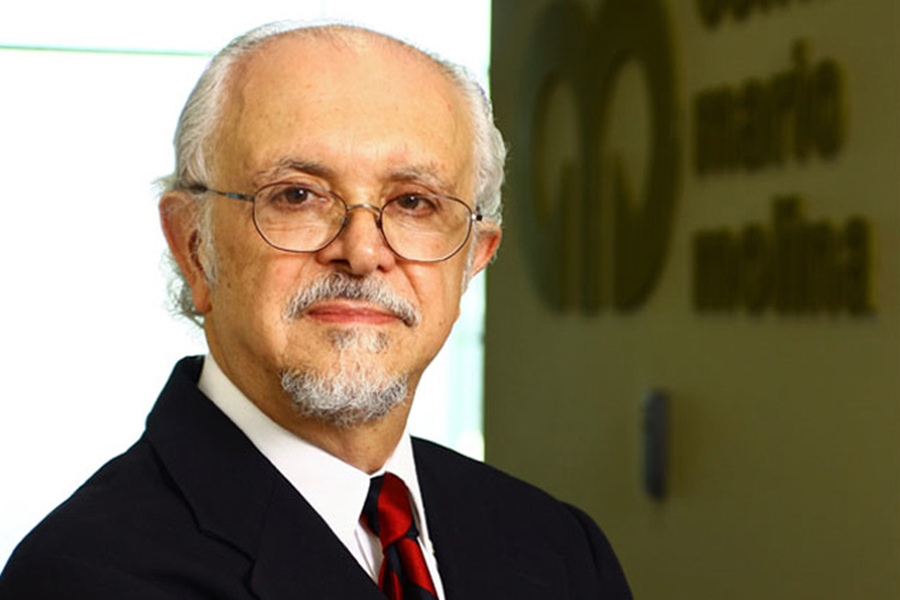Mario Molina was a brilliant Mexican scientist who contributed significantly to the field of atmospheric chemistry. He was best known for discovering the ozone hole in the Earth’s atmosphere and for his work on the harmful effects of chlorofluorocarbons (CFCs) on the ozone layer. This biography aims to explore Molina’s life, his contributions to science, and his legacy.
Early Life and Education
Mario Molina was born in Mexico City on March 19, 1943. His parents, Roberto Molina Pasquel and Leonor Henríquez de Molina, were both well-educated and had a keen interest in science. Molina’s early exposure to science sparked his interest in the subject, and he went on to study chemical engineering at the National Autonomous University of Mexico (UNAM). After completing his undergraduate studies, Molina received a scholarship to pursue a Ph.D. in physical chemistry at the University of California, Berkeley.
Career and Discoveries
After completing his Ph.D. in 1972, Molina joined the Jet Propulsion Laboratory in Pasadena, California, where he worked on atmospheric research. In 1974, he joined the faculty at the University of California, Irvine, where he continued his research on atmospheric chemistry.
Mario Molina’s most significant contribution to science came in 1974, when he and his colleague, Sherwood Rowland, discovered that CFCs, which were widely used in refrigerants and aerosol sprays, were destroying the ozone layer in the Earth’s atmosphere. Their research showed that CFCs release chlorine atoms when they break down in the atmosphere, and these atoms react with ozone molecules to form chlorine monoxide and oxygen. This reaction leads to a decrease in the amount of ozone in the atmosphere, which can have harmful effects on human health and the environment.
Molina and Rowland’s discovery sparked widespread concern about the use of CFCs and led to the signing of the Montreal Protocol in 1987, which aimed to phase out the production and use of CFCs worldwide. Molina and Rowland received numerous awards for their work, including the Nobel Prize in Chemistry in 1995.
Later Career and Legacy
Mario Molina continued to work on atmospheric chemistry throughout his career, focusing on issues such as air pollution and climate change. He was a professor at the Massachusetts Institute of Technology (MIT) from 1989 to 2004 and then at the University of California, San Diego, until his death in 2020.
Mario Molina’s legacy is significant, and his work has had a lasting impact on the field of atmospheric chemistry. His research on the harmful effects of CFCs led to the development of alternatives, such as hydrofluorocarbons (HFCs), which do not harm the ozone layer. Molina’s work also highlighted the importance of international cooperation in addressing global environmental issues.
Molina was also a member of several prestigious organizations, including the National Academy of Sciences, the American Academy of Arts and Sciences, and the Royal Society of Chemistry.
Molina also authored and co-authored several books, including:
- Molina, M. J., & Molina, L. T. (2006). Clean air, clean water, for tomorrow’s world. World Scientific.
- Molina, M. J., & Rowland, F. S. (2009). Ozone depletion: health and environmental consequences. Annual Review of Public Health, 30, 123-147.
- Molina, M. J., & Molina, L. T. (2012).
The future of atmospheric chemistry research: Remembering yesterday, understanding today, anticipating tomorrow. National Academies Press.
Molina received numerous awards and honors throughout his career, including:
- Nobel Prize in Chemistry, 1995 (shared with Sherwood Rowland)
- Presidential Medal of Freedom, 2013
- Albert Einstein World Award of Science, 1993
- Tyler Prize for Environmental Achievement, 1983
- National Medal of Science, 1989
Molina was also a member of several prestigious organizations, including the National Academy of Sciences, the American Academy of Arts and Sciences, and the Royal Society of Chemistry.
Personal Life
Mario Molina was married to his wife, Guadalupe Álvarez, for over 50 years, and they had two children together. In addition to his work in science, Molina was also an advocate for science education and science policy. He worked to increase public awareness of environmental issues and the importance of science in addressing these issues.
Death
Mario Molina passed away on October 7, 2020, in Mexico City, Mexico, at the age of 77. His death was confirmed by the Mario Molina Center for Energy and Environment, a nonprofit organization he founded in 2004. The cause of his death was not disclosed.
After his death, many scientists, politicians, and environmental advocates paid tribute to Molina and his legacy. The United Nations Environment Programme (UNEP) released a statement honoring Molina as a “trailblazer for atmospheric chemistry,” and many organizations expressed their gratitude for his contributions to the field of environmental science. Molina’s death was a significant loss for the scientific community and the world as a whole, but his work will continue to inspire and guide future generations of scientists and environmentalists.
Conclusion
Mario Molina was a brilliant scientist whose work on atmospheric chemistry and the ozone layer had a lasting impact on the field of environmental science. His research led to the development of alternatives to harmful chemicals and highlighted the importance of international cooperation in addressing global environmental issues. Molina’s legacy will continue to inspire future generations of scientists to work towards a more sustainable and healthy planet.



 For all latest articles, follow on Google News
For all latest articles, follow on Google News